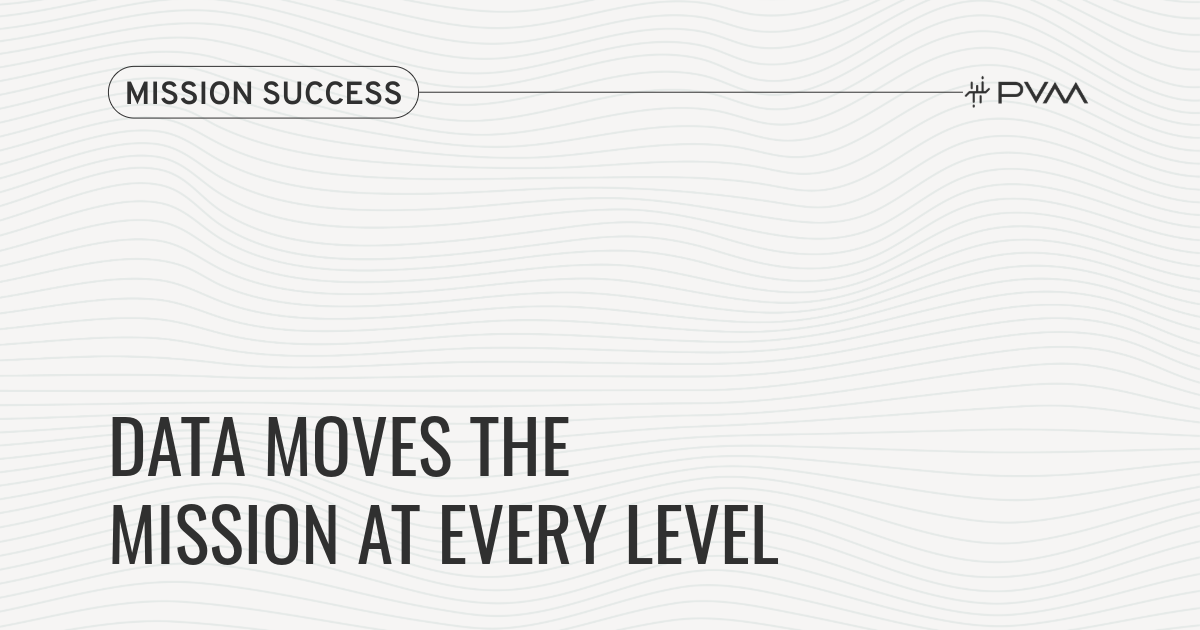Meet Terrence Alexander: Former CDC Fellow and Current PVM Data Scientist
We sat down with Terrence Alexander, Data Scientist at PVM. His path from Memphis to the CDC — and now to PVM — reflects a career built on curiosity,...
I NEED HELP WITH...
I'M WORKING WITH...
INDUSTRIES

At PVM, we have extensive experience unlocking the power of data and helping our clients achieve their missions in federal, state, and local governments, as well as commercial sectors. In today's data-driven world, organizations across all sectors recognize that their success hinges on harnessing the full potential of their data.

ABOUT US
TECH PARTNERS

3 min read
![]() The PVM Team
August 3, 2023
The PVM Team
August 3, 2023
.png)
This article is part 1 of a 3-part series: Guide to Artificial Intelligence for Government. Read part 2 to learn how to use AI to meet your mission objectives, and part 3 to read about the security and ethical considerations to think about to start implementing AI today.
In today's data-driven world, government agencies are sitting on a goldmine of valuable information. But, how can they unleash its true potential and gain actionable insights that drive better decision-making?
One key to success to unlocking the power of government data is to embrace the transformative capabilities of Artificial Intelligence (AI). At PVM, many of our clients today are already using advanced data systems like Palantir platforms. Public sector teams that have already modeled their data into an enterprise data system are ready today for next-level AI analysis—even more than you might imagine. In this guide to AI for government, we will help you understand why your data is ready for next level analysis today and help you see the clear benefits of leveraging these technologies as soon as possible.
In an ever-changing world, the need for government agencies to adapt and evolve has become increasingly crucial. Government agencies find themselves at the forefront of a transformative journey. To accomplish their missions and serve their constituents with unparalleled effectiveness, public sector teams must tap into the vast potential of Artificial Intelligence (AI). This groundbreaking technology presents an array of opportunities for agencies to revolutionize their operations, optimize resource allocation, and enhance decision-making processes. By embracing AI, agencies can harness its capabilities to drive innovation, improve service delivery, and propel their missions forward with unwavering confidence.
Before we dive into explaining why you are ready today, let’s start by understanding the pressing reasons government teams need to use AI in their operations.
Government agencies deal with vast amounts of data that is often crucial to the safety of its citizens and jurisdiction, ranging from public health data to insider threat information, and more. When government agencies make the wrong decisions, it can seriously impact the lives of many people.
AI can help agencies better use their data to make the right decisions for their constituency and enable faster response times by analyzing data at an unprecedented speed and uncovering valuable insights and patterns that can inform critical decision-making processes. By leveraging AI, public sector teams can make informed, data-driven decisions in real-time, leading to better outcomes for citizens and helping them achieve their missions.
AI has the potential to automate repetitive tasks, freeing up valuable time and resources for government agencies and helping to solve for resourcing constraints. By delegating mundane and time-consuming activities to AI systems, agencies can streamline their workflows, reduce operational costs, and allocate their human workforce to higher-value tasks that require creativity, critical thinking, and strategic planning.
AI's predictive capabilities empower government agencies to identify potential risks and take preventive measures in advance. By analyzing historical data and patterns, AI algorithms can alert public sector teams to potential security breaches or emerging threats. This proactive approach allows public sector teams to mitigate risks promptly, protect critical infrastructure, and ensure the safety and security of citizens.
AI can optimize resource allocation by analyzing data and identifying areas of inefficiency. By leveraging AI-driven insights, agencies can identify cost-saving opportunities, streamline processes, and allocate resources more effectively. This leads to optimized budget allocation, reduced waste, and improved operational efficiency.
Government agencies are responsible for safeguarding the public's well-being. AI can bolster public safety and security efforts by analyzing large volumes of data in real-time to detect anomalies, identify potential threats, and predict criminal activities. By leveraging AI-powered surveillance systems, agencies can enhance their ability to respond swiftly to emergencies, protect critical infrastructure, and ensure the safety of citizens.
In a rapidly evolving landscape, government agencies cannot afford to delay their adoption of AI. The urgent reasons to embrace AI are clear: to make informed decisions that drive mission success, optimize resource allocation for strategic endeavors, proactively mitigate risks, optimize budgets and resources, and enhance public safety and security. By harnessing the power of AI, public sector teams can navigate the complexities of a data-driven world with agility, efficiency, and effectiveness. The time to act is now, as AI can empower government agencies to fulfill their missions, serve their constituents, and create a future where innovation and responsiveness are the cornerstones of public service.
Now, read Part 2 of PVM’s AI Guide to learn how to use AI to meet your mission objectives, and how to use AI to meet your mission objectives.
Download your own FREE copy of PVM's Guide to Artificial Intelligence for government and other public sector teams.

We sat down with Terrence Alexander, Data Scientist at PVM. His path from Memphis to the CDC — and now to PVM — reflects a career built on curiosity,...

By Sydney Metzmaker Data can move the mission — and when it does, it’s one of the most powerful forces in government operations. When data flows...

By Bret Frederick When I was a young Marine, I worked as a systems administrator on the Marine Corp’s air battle planning system. It was part of a...